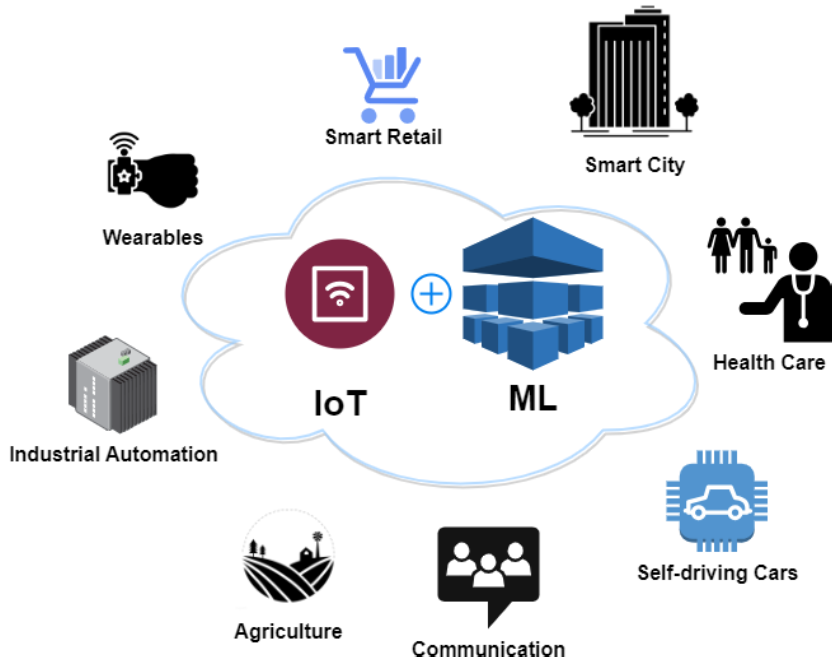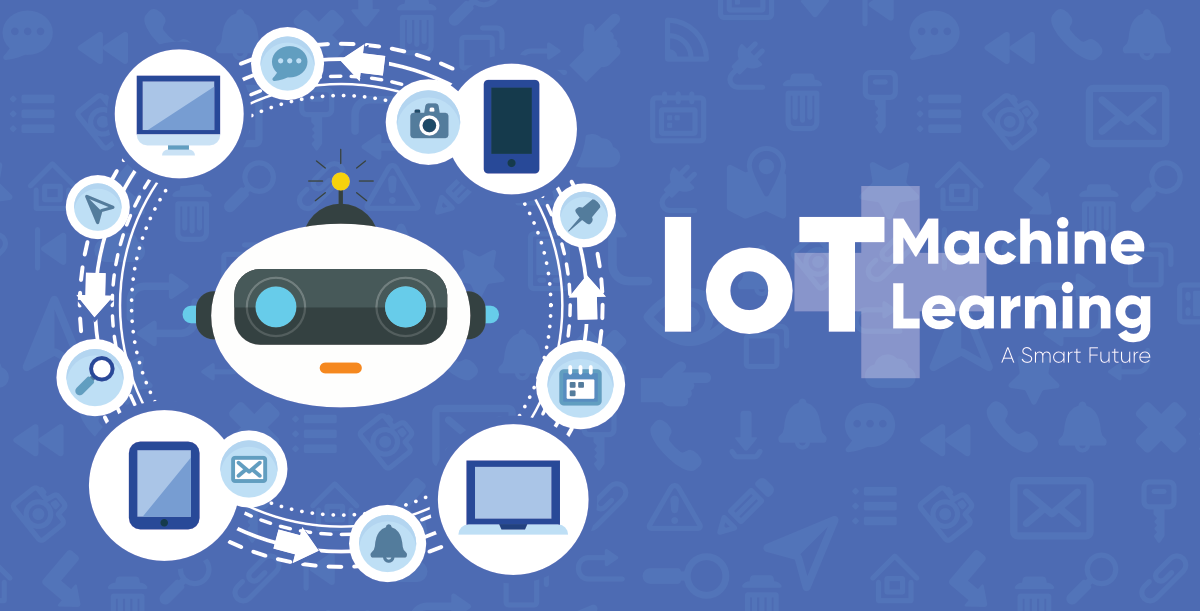ROLE OF ML WITH IOT (INTERNET OF THINGS)
The Internet of Things (IoT) is a network of diverse gadgets. All of them are linked to one another. Vehicles, buildings, and other things with sensors, software, and communication are among the gadgets. Artificial intelligence (AI) includes machine learning (ML). To identify patterns and generate predictions from information, AIs must be taught. Everything happens without any explicit programming. In recent years, machine learning has become increasingly crucial in the development of IoT applications.
By translating massive volumes of data into useful knowledge and decision-making instruments, IoT machine learning has transformed the way organizations operate. The technological world is continually developing, with new breakthroughs occurring virtually every day. The integration of the Internet of Things (IoT) with Machine Learning (ML) is one such topic that has recently garnered enormous interest.
Introduction to IoT
The Internet of Things (IoT) is a network of physical devices, automobiles, household appliances, and other items that are integrated with electronics, software, sensors, and connection to the network, enabling these devices to gather and share data.
Why should IoT employ machine learning?
By examining huge amounts of data with powerful algorithms, machine learning may assist decode the hidden patterns in IoT data. Machine learning inference can enhance or replace manual procedures in important operations with automated systems that use statistically determined actions. This unique combination of technology is creating new economic prospects and is positioned to play a significant role in determining our world’s future. In a growing data-driven world, IoT machine learning offers a novel and exciting route for organizations to use the potential of big data and achieve an advantage in the market. With its many uses and boundless potential, IoT machine learning is poised to be a vital engine of creativity and development in the next few years.
How do they work together?
IoT and machine learning technologies support each other effectively, with IoT devices producing massive volumes of data that machine learning algorithms can evaluate to derive insights and promote development. Organizations may automate operations, enhance productivity, and make data-driven choices in real time through integrating these kinds of technologies.
Role of IoT in ML
The Internet of Things network creates huge amounts of data, which may be used to train machine learning algorithms and increase their precision. Data from sensors, cameras, and other linked items may be collected by IoT devices and transmitted to the cloud or edge devices for processing. Companies may get useful insights and automate decision-making processes by employing machine learning algorithms to process and evaluate this data. This leads to increased efficiency and production.
Role of ML in IoT
Machine learning algorithms can improve the capabilities of IoT devices by allowing them to handle and assess data in real-time and take actions based on the conclusions they have learned. Organizations may enhance their performance, streamline procedures, and make choices based on the edge by embedding machine learning models into IoT devices, decreasing the requirement for cloud-based computing and lowering latencies.

Machine learning Functionalities in IoT
| Predictive Maintenance | Anomalies Detection | Personalization | Environmental Surveillance | Resource optimization | Smart Transportation |
| Predictive maintenance in IoT entails analyzing monitor data and predicting when systems are likely to fail, resulting in decreased downtime, greater safety, and cheaper maintenance costs. | Through ML-based identifying anomalies, anomaly detection in IoT applications helps discover anomalous events or data points that are beyond the anticipated range, enhancing device security and reliability. | It includes customizing programs based on user behavior and preferences, improving customer experience, and boosting device acceptance by adjusting settings depending on consumer tastes using machine learning techniques. | Environmental monitoring in IoT makes use of data from sensors to optimize circumstances of building and anticipate environmental using machine learning. | IoT optimizing resources uses machine learning to maximize resource utilization by anticipating need and modifying output for effectiveness and sustainability. | Machine learning is used in smart transportation to estimate traffic patterns, improve routes, and improve security while lowering congestion and pollution. |
Challenges
Several issues confront machine learning in applications for the Internet of Things, including the accuracy of data, security threats, scalability, latency, interoperability, and energy efficiency. High-quality data is essential for making reliable predictions, but noisy, insufficient, or inconsistent data might stymie model development. IoT devices may be subject to safety risks, exposing machine learning algorithms to assault. Scalability is problematic because of enormous amounts of data and devices, and latency can cause problems in real-time decision-making. The creation of models can be hampered by interoperability limits, and energy efficiency is a concern owing to the restricted power and computing capabilities of IoT devices.
Conclusion
Machine learning has evolved into a critical tool for creating applications for the Internet of Things. Preventive maintenance, anomaly detection, customization, environmental surveillance, resource management, and intelligent transportation may all benefit from machine learning techniques. Other challenges, such as data quality, safety, and scalability, must be addressed. However, opportune benefits of machine learning in IoT applications are enormous, and this industry will remain inventive.
As a result, enterprises must invest in developing machine learning skills in order to fully realize the promise of IoT. Organizations may optimize operations, increase user experience, and boost the economy by properly integrating machine learning and IoT.
